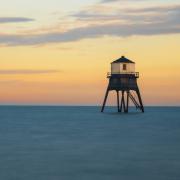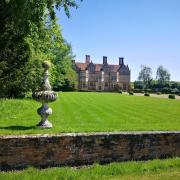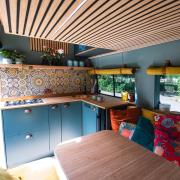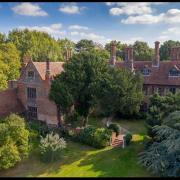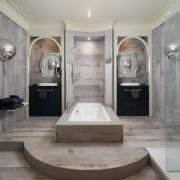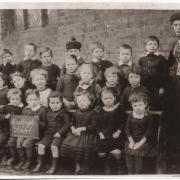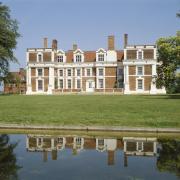This listed manor house in Southend-on-Sea is one of the oldest surviving domestic buildings in the county
Medieval Southchurch Hall located in Southend-on-Sea sits on land that once belonged to the monks of Canterbury in 823 AD. These monks were gifted the land, some 480 acres by a Saxon thegn named Leofstan (or as we call him today, Lifstan). A thegn was a Saxon Lord who had been given land by the King in recognition of his military support in times of conflict. A thegn could earn his land but also inherit them. As mentioned on the website Southend Timeline, though Leofstan’s name is not mentioned in the church, the local boy’s club goes by his name. This boy’s club is the only boy’s club in the country to go by the name of someone who lived more than one thousand one hundred and forty years ago!

It is widely thought that prior to the initial construction of Southchurch Hall in the fourteenth century a Saxon Hall originally stood on the site. The tenants of the old Saxon hall went by the name of ‘de Southchurch’. Indeed, the last tenant to go by this name was Peter de Southchurch, sheriff of Essex and Hertfordshire who died in 1309 and allegedly abused his power for his own gain. After this moment it was ‘all change’. Southchurch Hall was built around 1321 and was finalised around 1364. Southchurch Hall has both a Tudor and 1930s addition but the Great Hall is pleasingly laid out as it would have been all the way back in the fourteenth century. As we see today, the Great Hall at Southchurch Hall would have displayed a central fireplace and the original timbers blackened by smoke can still be viewed in the roof despite the fact that a grand portion of the roof was restored in the 1930s. The moat around Southchurch Hall has been classed a scheduled monument and is fed by two natural springs. As explained in The Local History Blogger ‘Today there are around 6000 moated sites in England with the greatest concentration being in central and eastern England. The moated manor house was at its peak between the years 1250-1350.’ By the time Southchurch Hall was built there was no particular strategic need for a moat in terms of defence - the moat had become more of a status symbol.
Southchurch Hall is Grade I listed in terms of architectural importance and was included in Simon Jenkins England’s Thousand Great Houses and is one of the oldest surviving domestic buildings in Essex. It was formerly the Manor House of Southend and is a timber framed building with a south solar room. Solar rooms became popular in the mediaeval era and were generally used as a sitting room or drawing room where the Lord and Lady of the Manor could entertain guests. Normally they were situated above the Great Hall on the first floor of a building. Generally they were smaller than the Great Hall and their size afforded guests and hosts more intimate conversations. Tapestries and wall hangings would have adorned the walls of a Solar room.

In the mediaeval era Southchurch Hall had a private chapel (this was not unusual in houses of this type) dedicated to Saint Katherine, the patron saint of scholars. There is a large painting depicting the Peasants Revolt in the museum today. The Peasants Revolt was very active in the county of Essex and various papers were removed from the premises at the time. It is not known if these were returned or if the Hall was ransacked or burnt as suggested in the painting.

Richard Rich was the next owner of Southchurch Hall. The infamous mediaeval mercurial man purchased the Hall after the Dissolution of the Monasteries. The question one asks oneself is which famous historic houses did Rich not own as he seems to have bought up most of the county! When Rich’s bloodline died out in 1657 Southchurch Hall passed to Rich’s relations, The Earls of Nottingham. None of the aforementioned ever actually lived in Southchurch Hall, they leased the Hall to various individuals including a butcher and a rich farming family. In the 1920s Southchurch Hall was a farmhouse and went by the name of Whiffen’s Farm. Southchurch Hall was bequeathed to the people of Southend-on-Sea in 1925 by the Dowsett family. Thomas Dowsett, the first mayor of Southend, was a popular and good man. Thomas Dowsett was not born into wealth, indeed his first job was as a living scarecrow! He worked lots of different jobs selling all manner of things. He was also an estate agent and helped build Clifton Terrace. His son, also called Thomas, gifted the house and land to the people of the town. Dowsett wished for the house to be used as a library and today it is a museum. As far as the land was concerned, the aim was to provide the town with land to use as a recreation ground and it was adapted with this in mind. The house needed significant repairs and these commenced in 1929. During the restoration of Southchurch Hall in the 1930s when the house was in a very a dilapidated state (the photos of the roof falling in, plants growing in the roof and the very overgrown garden are testament to this) there were some archaeological discoveries that are displayed today at the museum that is Southchurch Hall for all to see.
Please check southendmuseums.co.uk for full details of opening times.









